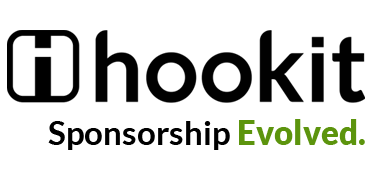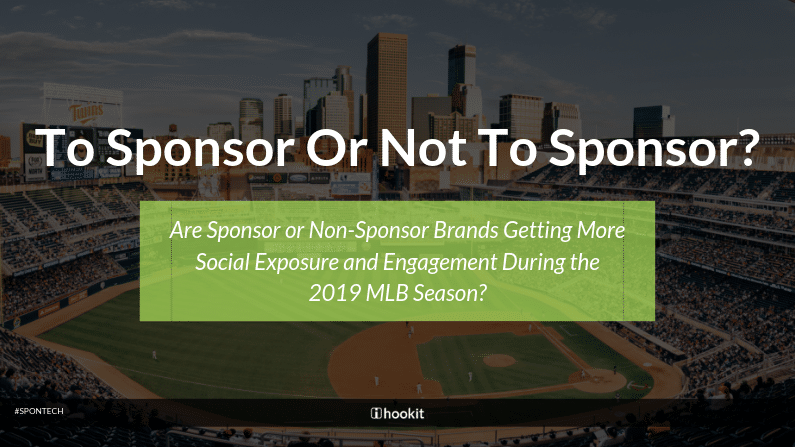When brands attach themselves to popular teams, leagues, or events through sponsorship, these brands hope to adopt more meaning in the minds of consumers. Today, the MLB – with over 22M followers across YouTube, Twitter, Facebook, and Instagram – is effective in reaching a wide audience through social media. Brands have taken advantage of this, accessing their target demographic both through official MLB league and team accounts. However, beyond promoting the sponsored brands, the MLB and teams also talk about current events and other popular brands on social media. We analyzed which brands were the most talked about and which got the most engagement on posts about them by the MLB and the teams in the league.
As reported on MLB.com, the MLB entered the 2019 season with 36 league-level partnerships. However, according to the Hookit database, the MLB mentioned 48 brands on social media over the course of the season. Diving into the data, we compared the ratio of posts, interactions on those posts, and the views on the video posts for sponsors to non-sponsors exclusively looking at text mentions of brands by official social accounts of teams and the league. Post interactions refers to the number of likes, comments, and shares across any social platform; high engagement typically indicates that a sponsorship is making an impact for a brand.

Although there were 15 sponsors that the MLB didn’t mention at all on social media during the first half of the season (Amazon Web Services (AWS), CLEAR, Doosan, Evan Williams Bourbon, Good Sam, The Hartford, MGM Resorts, Mitel, Netspend, Old Dominion Freight Line, SiriusXM, Snapple, Taco Bell, TuneIn, and Utz), brands that were official sponsors still captured 76% of total posts, 75% of total interactions, and 87% of total views compared to posts for brands that were non-sponsors. Even so, that means that 24% of the posts made by the MLB on social media about brands were about non-sponsors!
Branded Content on League Accounts

The top 5 brands that the MLB generated engagement for were Papa John’s, Supercuts, Google, Benjamin Moore, and Coca-Cola, with 2.87M, 2.86M, 2.6M, 1.8M, and 907K interactions, respectively. Benjamin Moore – a paint maker that developed the official paint colors of the Chicago Cubs, Kansas City Royals, and New York Yankees – was a non-sponsor that still held a top-5 position, making it the non-league sponsor with the most league interactions. While Benjamin Moore sponsors the teams they developed paint for, the brand isn’t on the MLB’s official partner list. That beats out 18 actual partners of the league, including Coca-Cola, GEICO, and YouTube, with 906.8K, 717.8K, and 687.3K interactions, respectively.
Branded Content on Team Accounts

When it comes to teams promoting brands, the LA Dodgers solidified their top position by generating more than twice the number of interactions as the runner-up, the NY Yankees. The brand with the most interactions generated by a team’s social media posts was Anheuser-Busch InBev’s brand Budweiser with the LA Dodgers at 1.3M interactions, followed by Biofreeze with the NY Yankees at 494.5K interactions, Citibank US as the stadium sponsor of the NY Mets at 359.3K interactions, Anheuser-Busch InBev’s brand Budweiser with Oakland Athletics at 298.1K interactions, and finally Jostens with the Boston Red Sox at 210.3K interactions. Surprisingly, the only brand in the top 5 most engaged brands from team promotion that was also a league sponsor was the number one and number four spot, Anheuser-Busch InBev’s brand Budweiser. Although it ranked last in terms of interactions for the top 5, Ventum Racing captured the most views of the 5 with a whopping 876.8K views. This is more views than the first and second-place slots combined, showing that video content can drive more engagement than interactions on photos or text posts.
Although MLB teams collectively mentioned 174 brands (with many teams mentioning the same brands), there were 200+ brand sponsors that weren’t mentioned by their respective MLB team partners on social media. A handful of these sponsors were also MLB sponsors and, although they may not have been mentioned by a particular team they sponsored, some were mentioned by other teams or on league accounts; other sponsors such as AT&T, Dunkin’ Donuts, and Ford weren’t mentioned on any accounts at all. Of the brands that were mentioned, however, posts by teams about non-sponsors typically drove high engagement, with a single post generating up to 28K interactions. Sponsors, on the other hand, received considerably less engagement on posts promoting their brand, garnering a maximum of 2.9K interactions on a single post. As a whole, this data suggests that the league and its teams should make more of an effort to drive value for their respective sponsors by creating more engaging branded posts.
As more brands begin to give themselves a voice through avenues such as team and league sponsorships, there is a need to know the data behind their sponsorships and whether they are being effectively promoted by their partners. The right metrics and insights can help sponsor brands understand which of their sponsored properties are most effective and drive higher ROI. Sponsor brands can gain this competitive advantage by leveraging the Hookit platform to make effective sponsorship decisions and strategy.


